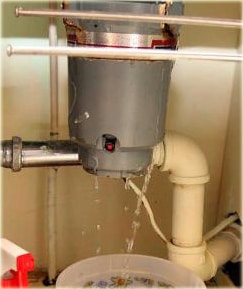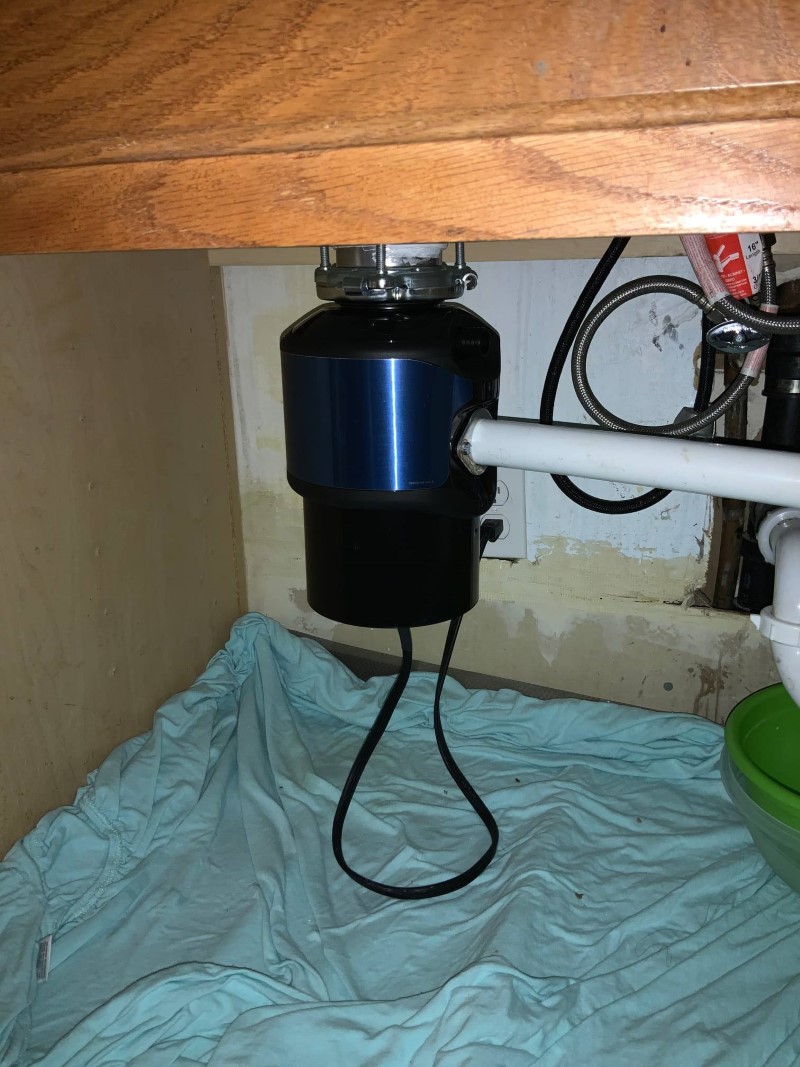The Guide to Resolving a Leak in Your Garbage Disposal
The Guide to Resolving a Leak in Your Garbage Disposal
Blog Article
We've come across this article about Why Is listed below on the web and decided it made good sense to talk about it with you on this page.

Garbage disposals are important kitchen area home appliances that assist in taking care of food waste efficiently. Nonetheless, a dripping waste disposal unit can be a frustrating and untidy trouble to manage. Fortunately, many leakages can be taken care of conveniently with a couple of straightforward steps. In this short article, we will review exactly how to deal with a dripping waste disposal unit properly.
Intro
Garbage disposals are set up under kitchen sinks and are made to shred food waste right into smaller items, permitting it to travel through the pipes system easily. While these gadgets are usually dependable, leaks can happen gradually because of wear and tear, loose connections, or damage to the system.
Typical Sources Of Leakages in Rubbish Disposals
Worn Seals and Gaskets
Seals and gaskets play an essential role in protecting against water from dripping out of the waste disposal unit. With time, these parts can degrade, leading to leaks around the disposal device.
Loose Connections
The links in between the waste disposal unit and the plumbing system can end up being loosened over time, creating water to leak out throughout procedure.
Fractures or Holes in the Disposal System
Physical damage to the garbage disposal, such as cracks or holes in the real estate, can also result in leaks.
Recognizing the Source of the Leak
Prior to attempting to fix a dripping garbage disposal, it is necessary to determine the resource of the leakage. This can generally be done via visual examination or by conducting straightforward tests.
Visual Evaluation
Inspect the waste disposal unit unit meticulously for any type of indicators of water leakage. Pay close attention to locations around seals, gaskets, and link points.
Testing for Leaks
One way to check for leakages is by running water with the disposal unit and looking for any type of visible signs of leakage.
Tools and Materials Needed for Fixing a Leaking Waste Disposal Unit
Before starting the repair service process, gather the necessary devices and materials, including a screwdriver, adjustable wrench, plumbing technician's putty, replacement seals or gaskets, and epoxy or patching material for fixing fractures or openings.
Step-by-Step Guide to Taking Care Of a Dripping Garbage Disposal
Turn Off the Power
Before trying any kind of fixings, ensure that the power to the waste disposal unit unit is shut off to prevent the threat of electrical shock.
Situate the Leak
Identify the specific area of the leakage and identify the reason.
Tighten up Connections
Utilize a wrench to tighten up any loose connections in between the disposal unit and the plumbing system.
Replace Seals or Gaskets
If the leak is because of used seals or gaskets, get rid of the old parts and replace them with brand-new ones.
Patching Fractures or Holes
For splits or holes in the disposal unit, usage epoxy or an appropriate patching material to seal the broken location.
Testing the Waste Disposal Unit After Fixing
When the repair work is full, evaluate the waste disposal unit by running water via it to make certain that the leak has actually been dealt with.
Preventive Upkeep Tips to Avoid Future Leaks
To avoid future leakages, it is necessary to do regular maintenance on your waste disposal unit. This consists of keeping it clean, preventing placing non-food things or hard objects down the disposal, and periodically looking for leaks or other issues.
Final thought
To conclude, dealing with a dripping waste disposal unit is a reasonably straightforward procedure that can be finished with fundamental tools and materials. By following the steps outlined in this short article and practicing precautionary maintenance, you can maintain your garbage disposal in good working condition and prevent pricey repairs in the future.
HERE’S HOW TO FIX YOUR GARBAGE DISPOSAL
WHAT TO DO IF SOMETHING IS STUCK IN YOUR GARBAGE DISPOSAL
If the impeller won’t turn, there’s probably something stuck in the disposal. It could be a steak bone or peach pit, although plumbers report pulling all sorts of inappropriate objects out of disposals, such as bottle caps or aluminum foil. Make sure power to the disposal is off, and look inside to see if you can see the source of the jam.
Never stick your fingers in a disposal. Pull out anything you see with tongs or pliers.
If the disposal still won’t work, it may be time to call a plumber or consider buying a new disposal. GEM Plumbing & Heating is here for all of your garbage disposal needs.
WHAT TO DO IF YOUR GARBAGE DISPOSAL DRAIN IS CLOGGED
Take everything out from underneath your sink and put a bucket or other container under your disposal to catch any water that drains out. Disconnect your disposal from the power supply. If it’s plugged into a wall outlet, unplug it. If it’s hardwired into an electrical box, go to the electrical panel and turn off the breaker for the disposal. Pour ¼ cup of baking soda into the drain, followed by ½ cup of white vinegar. Give the solution a few minutes to fizz and do its work. Look into the disposal with a flashlight to see if you can see an object that might be causing the clog. If you see it, remove it using tongs or pliers. MORE TIPS ON DEALING WITH A CLOGGED GARBAGE DISPOSAL
Never use drain cleaner in a garbage disposal. It can damage the plastic parts inside the disposal. You can also be splashed with the caustic liquid while working to clear the clog. Beware! Never stick your fingers into a garbage disposal. Trust us — not a good idea. In many instances, your dishwasher drains through your garbage disposal. This allows the disposal to grind any large food particles that may be drained out of your dishwasher. There are some jurisdictions, however, where the plumbing code prohibits such a connection. WHAT TO DO WHEN YOUR DISHWASHER DRAINS THROUGH THE DISPOSAL
Run some water in the sink so your plunger has at least a ½-inch of water to create a seal and plunge vigorously up and down several times. You may need to repeat this several times. Run hot water down the drain to clear any residue that remains.

I was introduced to that article on Garbage Disposal Leaking From Bottom from an acquaintance on a different website. In case you enjoyed reading our blog post kindly make sure you remember to share it. Kudos for your time. Please come visit our blog back soon.
Call Today Report this page